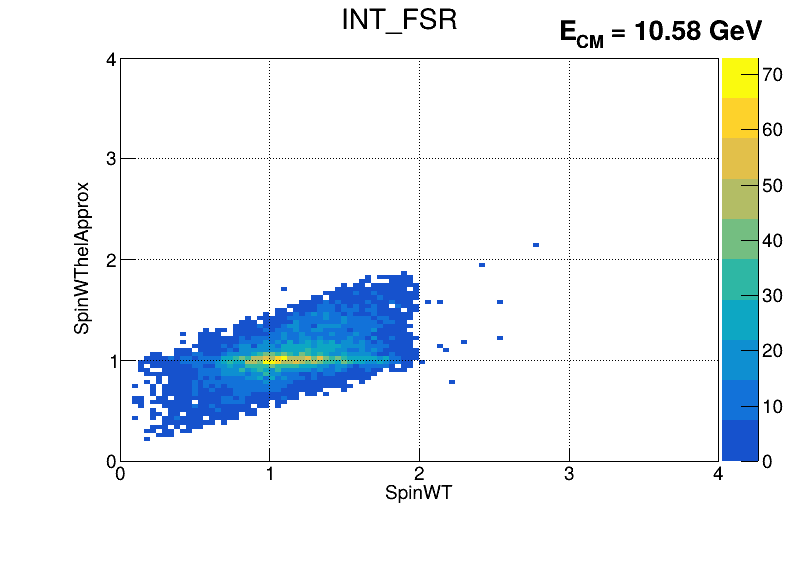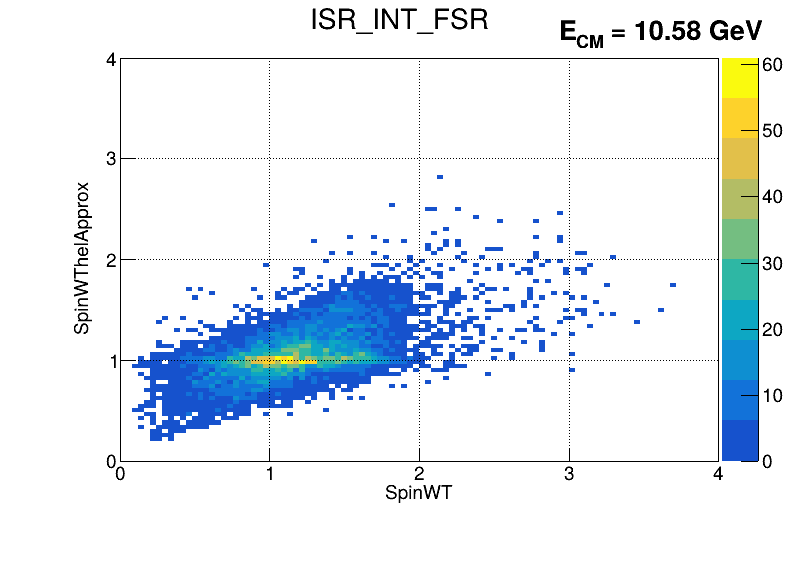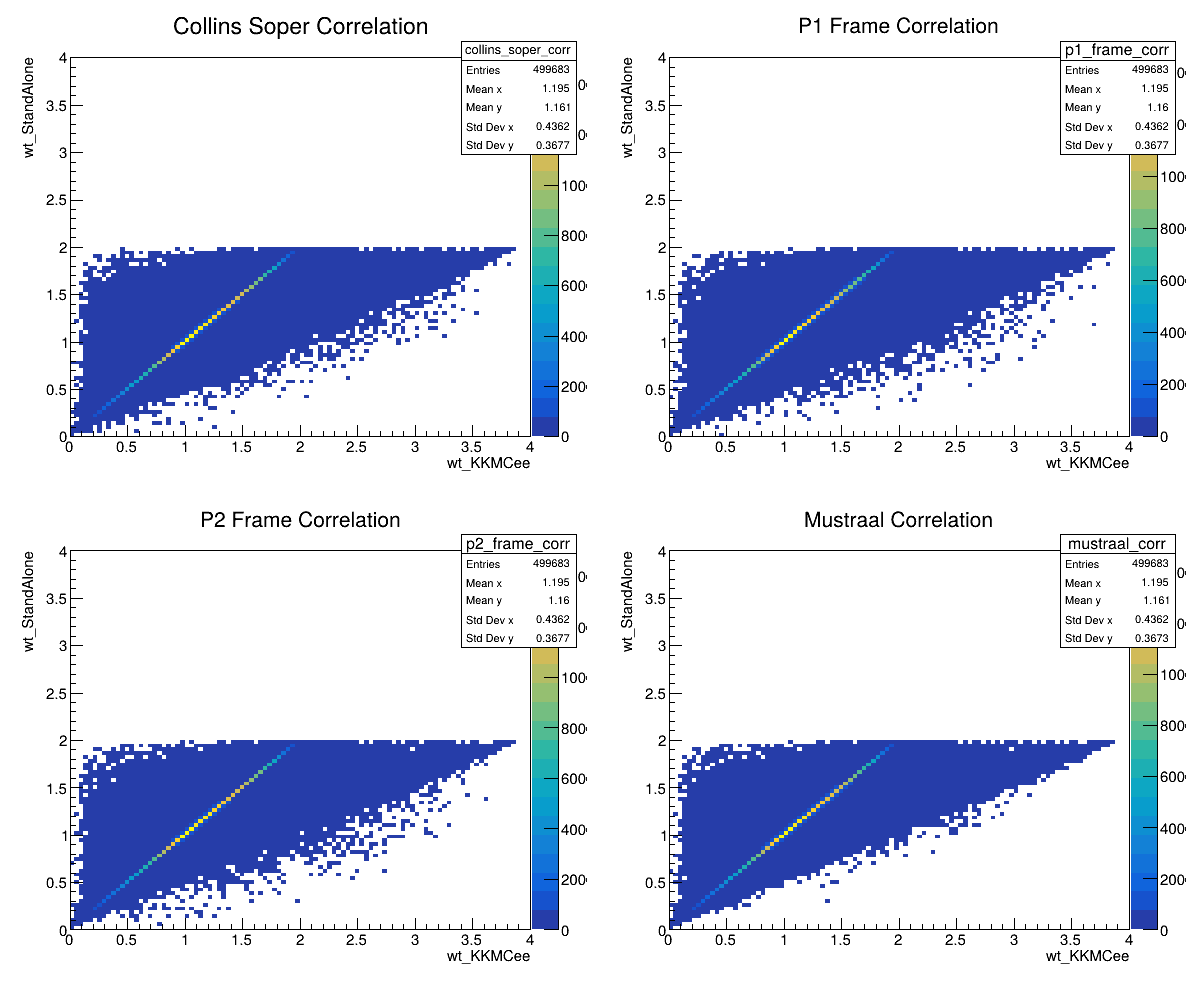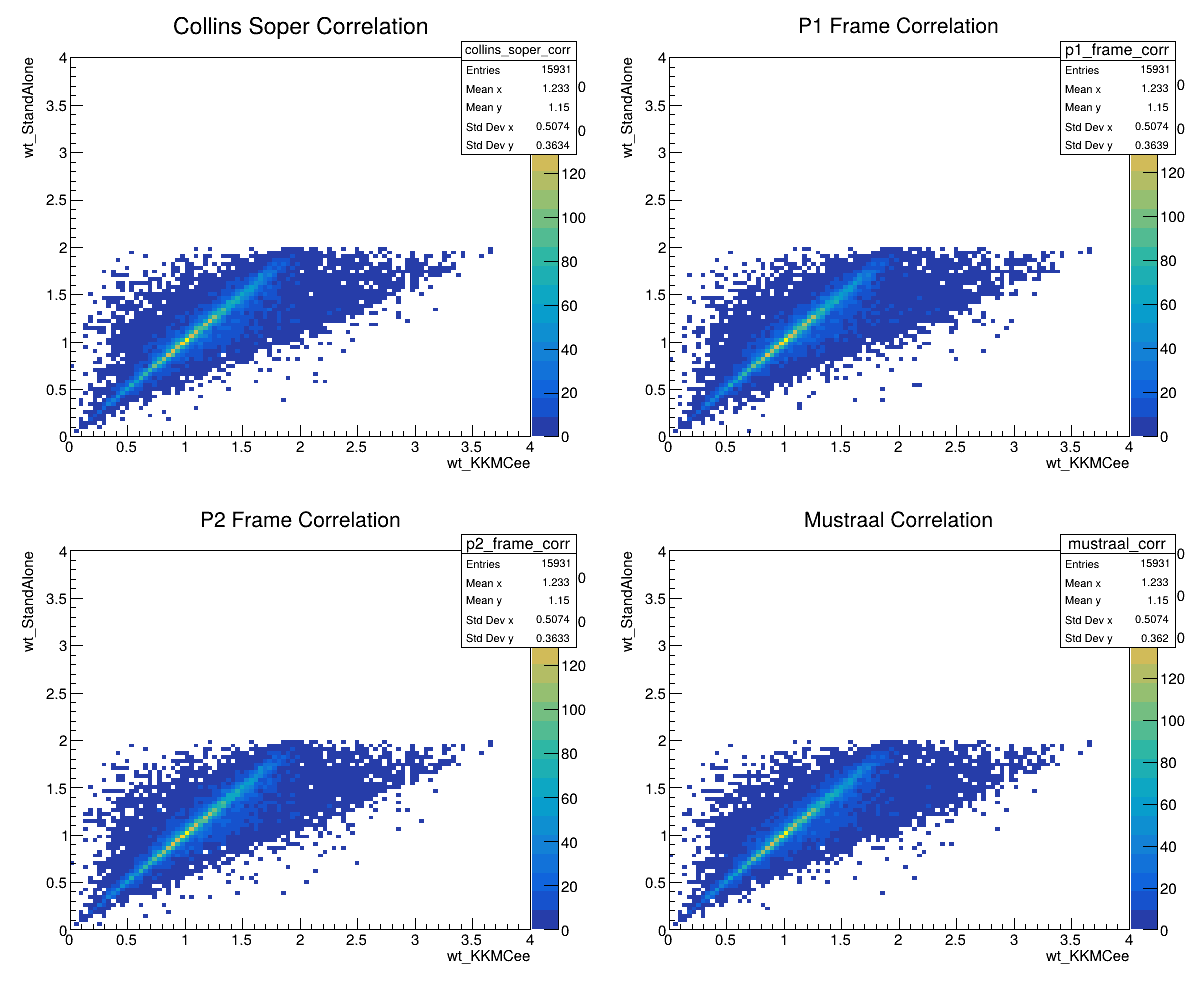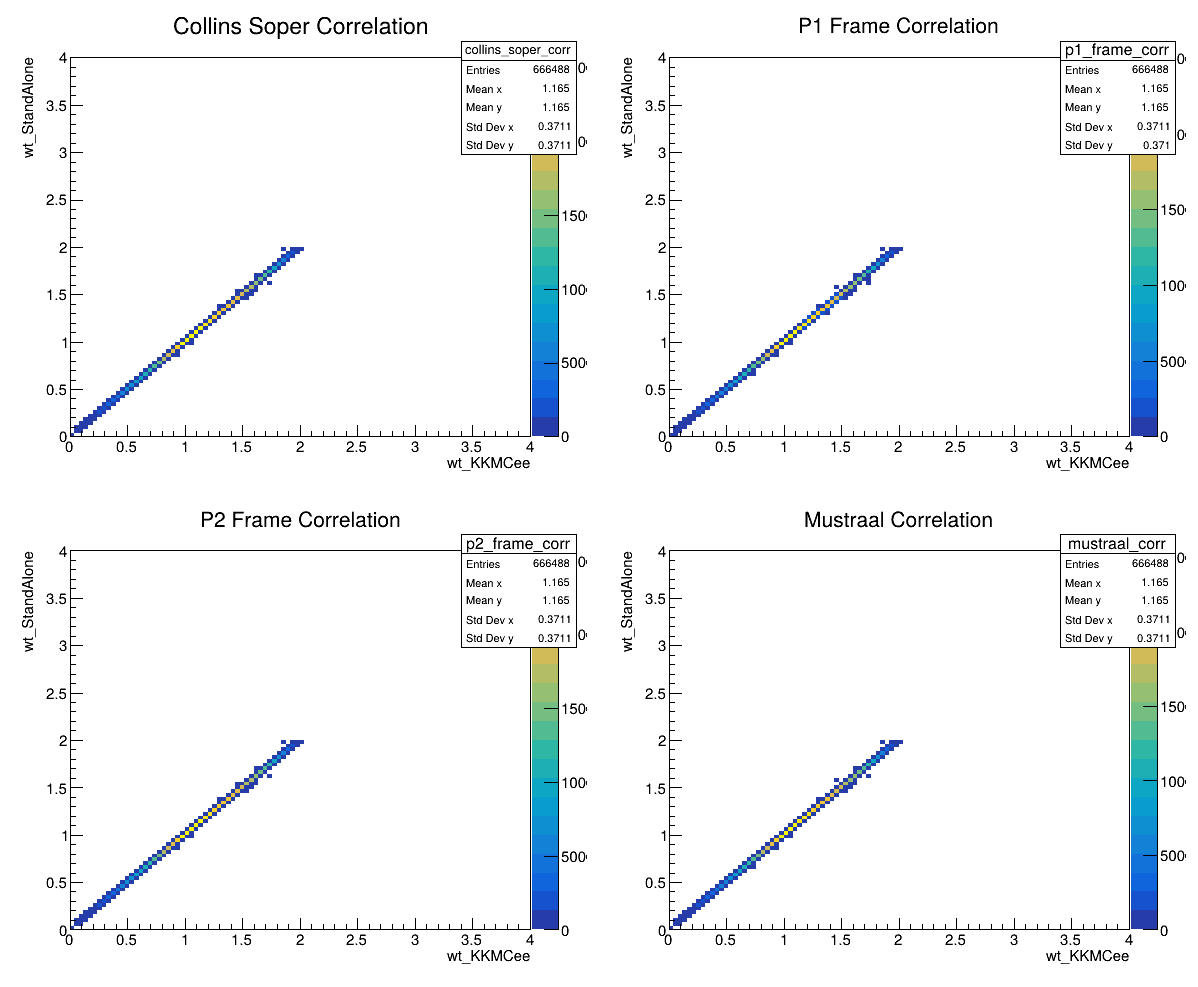Features in weight calculations
WARNING (Sep 28, 2025): we have clarified why helicity atributed off run, differed from the ones provided by KKMCee till now.
We have found:
-
1) So called helicity axes used internally in KKMC differ from chirality axes far more than we expected. As a consequence attributed helicity likes differed substantially from the one we got from external applications, when z-axes of its frames are used. We have added option to use in KKMCee chirality axes instead. Chirality is defined as the intrinsic spin projection along momentum of tau. User can switch between two options with internal switch chiral=1/0 in file TauPair.cxx. We keep option chiral=1 hard coded.
-
2) See below figures for comparison of KKMC internal z axis with chirality axis evaluated with the help TRALO4 routine which has now options for transformation from lab frame back to tau rest frames (as it was in f77... )

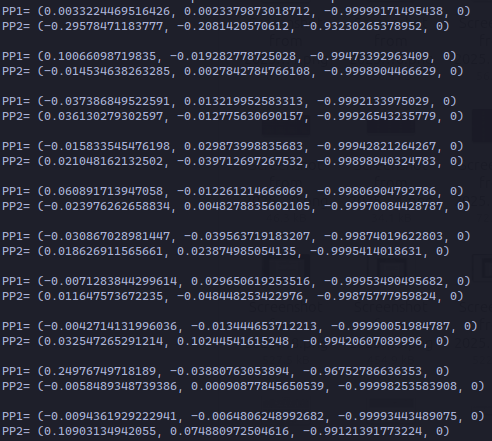
-
3) We had to fix misprint in our application, but this was done without much care. We (AT and JJ) need to learn conventions of frame orientations used in KORALB KKMC (Kleiss-Stirling) and external applocations as those of Korchin, before we can explain and fix all in professional way.
-
4) The current version of the external code, does not support FSR. This is because of the choice of frames are (Collins Soper & Mustraal) constructed to approximate 2 \(\rightarrow\) 2 scattering amplitude in presence of ISR only. However the number of FSR photons are very less compared to the ISR photons, making this a good approximaion.
While testing, we were making comparison of spin weight as in KKMCee.
- 1) with the helicity approximation included.
- 2) with Spin weight calculation in a standalone way using Collins-Soper and mustraal frame.
Correlation between the spin weight as in KKMCee with the helicity approximated one at 10.58 GeV, when z-axes of its frames are used. (To switch off the ISR, set parameter 20 (KeyISR) to 0).
Correlation between the spin weight as in KKMCee with the helicity approximated one at 150 GeV, when z-axes of its frames are used. (To generate the input for this run - In workMini.input, set parameter 1 (CMSene) to 150.0).
The correlation between, the spin weight as in KKMCee with the Spin weight calculated in a standalone way using collins-soper and mustraal frame. In this case the inital state bremsstrahlung is present
The same plot with hard photons selected.
The same plot with soft photons selected (set hardSoft()>0.98 in the main.cxx while filling the histogram).
The histogram below shows the \(E_\pi/E_\tau\) distribution in the \(\tau\)-pair rest frame at \(\sqrt{s}=10.58\,\text{GeV}\) for the single-pion decay channel (To generate the single pion decay channel, set JAK variable in workMini.input to 159).
Conclusion from the plots
- At 10.58 GeV, the spin weight lies within 0–2 when bremsstrahlung is absent, whereas events with bremsstrahlung develop a tail extending up to nearly 4.
- The KKMCee construction chooses photon helicity randomly for a particular event effecting spin weight > 2 in presence of hard bremsstrahlung events.
- This is not an ambiguity of the code, for observables such as \(E_\pi\)/\(E_\tau\), the photon helicities are averaged over, yielding a flat distribution.
- All weights are strongly correlated as it should be.
Explanation
This is because in KKMCee, helicities of photons are generated with phase spcae, and the matrix element is calculated only for fixed photon helicities.
The helicity state of photons are stored in the matrix m_Phel. If needed, these can be made accessible to users in a future version of KKMCee through new getter functions — please let us know if this feature would be useful.
